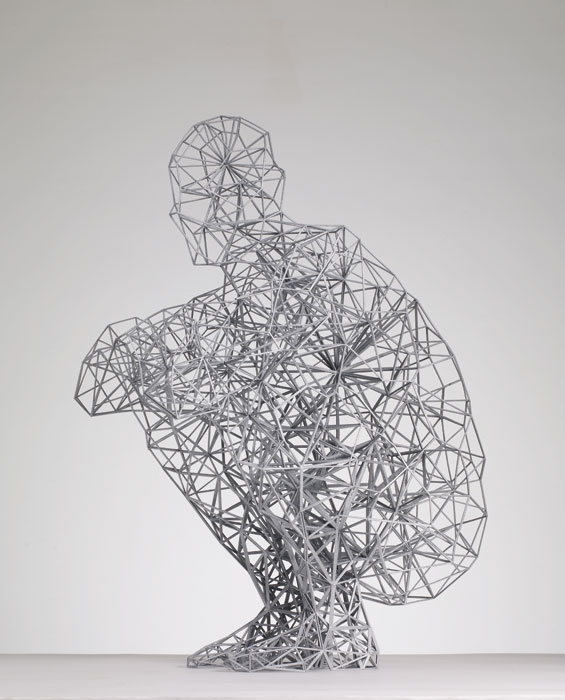
Fascia has gained increasing attention in recent years. Becoming conscious of this largest organ of its kind is crucial for maintaining your body in shape. Fascia is a connective tissue that envelops all our organs. It is a translucent or whitish web that accounts for 30% of our body weight. The fascial network is a continuous structure throughout the body, with remarkable sheaths of various types playing the dual role of both connecting and separating.
“Fascia is the soft tissue component of the connective tissue system that permeates the human body; it interpenetrates and surrounds muscles, bones, organs, nerves, blood vessels and other structures. Fascia is an uninterrupted, three-dimensional web of tissue that extends from head to toe, from front to back, from interior to exterior. It is responsible for maintaining structural integrity, and for providing support and protection; it also acts as a shock absorber. Fascia has an essential role in blood flow and biomechanical processes that allow for intercellular communication. Fascia functions are the body’s first line of defense against pathogenic agents and infections. After injury, it is the fascia that creates an environment for tissue repair.”
Paoletti, 2006, cited in Oschman, 2016
Fascia is everywhere—there are no empty spaces in our body. Every available space is occupied, filled with fibers that may appear to lack coherent order. However, at the endoscopic level, research has confirmed that fascia exhibits fractal properties, meaning it follows a pattern of self-similarity that repeats at increasingly smaller scales. The term “fractal” was introduced by Benoît Mandelbrot in mathematics in 1982.
In the early 2000s, as a young student, I had the opportunity to attend Benoît Mandelbrot’s keynote lecture at the University of Geneva in Switzerland. In my master’s thesis, I referenced his work in the context of fractals applied to finance. Little did I know at the time that years later, I would return to the concept of fractals while writing a blog post about fascia and yoga. Back then, I wasn’t consciously aware of my fascia at all. Of course, I knew I should move as much as possible, exercise, drink plenty of water, avoid alcohol, and eat a healthy, unprocessed diet. However, I also thought yoga was an extremely boring and uninteresting discipline.
Today, I am deeply interested in yoga and its beneficial effects on fascia. Fascia is a highly mobile tissue that allows for the smooth movement and gliding of adjacent structures in the body. Dr. Guimberteau named this sliding system the Multimicrovascular Collagenic Absorbing System. Fascia enables a push-and-pull relationship among structures, a concept known as tensegrity—a portmanteau of “tension” and “integrity.” Dr. Levin (1981) discovered that bones do not compress against each other at their joint surfaces but rather “float” within the fascia and associated soft tissues, much like the rods in Snelson’s sculptures.
“Fascia is the organ of posture”
Ida Rolf
Without fascia creating structure through tensegrity, our bodies would collapse into a heap. When your fascia is free and healthy, you can stand strong and tall. When it becomes brittle and bound, you cannot. If you spend eight hours a day sitting for years, your fascia molds itself into the shape of a sitting person. To counteract this effect, it’s essential to integrate physical activity and take frequent breaks.



Our 206 bones are held aloft against gravity by the tensile force of fascia, ligaments, and tendons. Fascia plays a crucial role in maintaining the body’s structural integrity. This understanding leads me to a holistic perspective on health—recognizing that even seemingly separate parts of our body are deeply interconnected. Have you ever considered how stress travels through the body via fascia? Everyone knows the sensation of stress affecting muscle tension throughout the body. Under stress, fascia can tighten, thicken, and become irritated. If you stop moving, your fascia becomes sticky.
Fascia is the constitutive tissue that creates the architecture, it is the home within which all of the body’s components develop, exist, and have their being.
Gumberteau & Armstrong, 2015
So, what can you do to counteract the negative effects of stress and lack of movement? Yoga is a powerful tool for relieving stress and freeing your fascia. While drinking water is important—since two-thirds of fascia’s ground substance consists of water—it is not sufficient on its own. Research shows that to effectively hydrate fascia, movement is essential. Compression and stretching help facilitate hydration, as water is drawn into the tissue through changes in osmotic pressure (Schleip, 2016).
“Movements that load, stretch or compress will squeeze water from the sponge-like connective tissue of the neuromyofascial system. Fresh fluid from surrounding tissue and the local vascular network may replace the previous fluid that was removed along with accumulated waste products. In healthy states, the extracellular water of fascia is in a state of bound water rather than bulk water. A partial rehydration seems likely to occur when the fascia is squeezed again with an influx of bound water.”
Schleip & Baker, 2015, p.209
References:
- Robert Schleip PhD: The Secret Life of Fascia – YouTube
- Robert Schleip – The Fascia Guide
- Free Your Fascia by Daniel Fenster, 2020
- Fascia in Motion by Elizabeth Larkam, 2017
